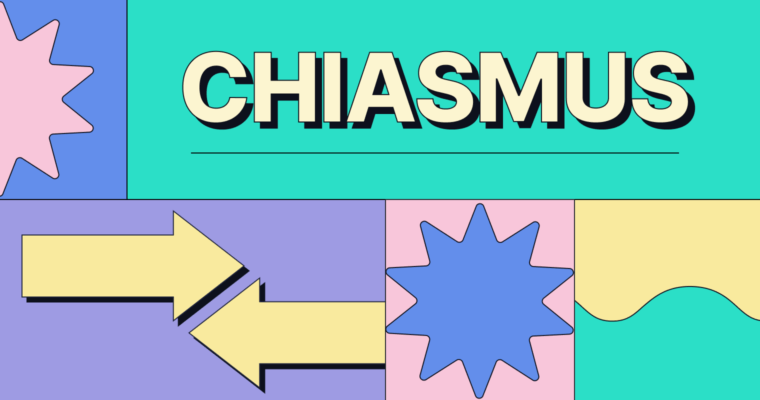
Whether you realize it or not, you’ve likely encountered a person, message, or situation today that appealed to your sense of pathos. Pathos is a persuasive device that elicits a strong emotion from an audience. When used effectively, pathos can prompt you toward a desired action or help you win an argument.
Table of contents
What is pathos?
The word pathos is derived from the Greek word páthos, which means “experience,” “suffering,” or “emotion.” The Greek philosopher Aristotle introduced the concept of pathos in his written work Rhetoric, in which he also introduced the three other modes of persuasion: ethos, logos, and kairos.
Although appealing to an audience’s emotions can be a powerful technique in persuasive writing, relying solely on this mode has its risks: you might end up making a weak argument that’s not supported by logic (logos) or credibility (ethos).
Additionally, the use of kairos, which involves choosing the right timing and tone for your words, can help bolster the effectiveness of pathos in a message.
For example, let’s say you recently moved to a new neighborhood where you don’t know anyone. You might receive a mailer from a local neighborhood group that says, “Welcome to the block! Stop by the community center to get to know your new neighbors!” The message is accompanied by an image of people conversing and doing activities together.
In this example, the neighborhood group timed its message (kairos) so it corresponded to your move to a new area. It appeals to your possible feelings of isolation or loneliness (pathos) after this big move, while the image evokes the enjoyable feelings one experiences when interacting with others (also pathos).
Using pathos
Employing exclusively pathos to persuade your audience toward your goal has its downsides. It might suggest that your argument is shaky and doesn’t have much evidence or basis in reason—for example, it’s based on a logical fallacy—or that you lack knowledge or experience (ethos) on the topic.
When pathos isn’t balanced with other modes of persuasion, it can turn into manipulation. For example, when an author makes an argument that’s not based on logic about a subject they don’t have expert knowledge in or authority to speak on might use false or misleading details to sway an audience’s feelings.
What is pathos in writing?
Whether you’re writing an argumentative essay, penning ad copy for your company, or developing a character in your next novel, pathos can help you build a strong emotional connection with your readers.
For example, it can be used as a plot device to develop your antagonist’s character arc so that readers feel empathy toward a seemingly loathsome personality. Pathos can also be used to describe a scenario in a way that readers can relate to.
Pathos is applicable to any style of creative and professional writing. It’s effective in fiction, poems, playwriting, and scriptwriting. As for nonfiction or work-related writing, pathos can be used in a political speech, a memoir, an op-ed, or an attorney’s arguments in a courtroom.
Essentially, any form of writing that includes vivid descriptions, tactical word choice, or relatable anecdotes to elicit a certain feeling from an audience is using pathos.
What are examples of pathos?
Below are a few examples of pathos across different forms of writing.
Pathos in poetry
“And you, my father, there on the sad height,
Curse, bless, me now with your fierce tears, I pray.
Do not go gentle into that good night.
Rage, rage against the dying of the light.”
—Dylan Thomas, “Do not go gentle into that good night”
In Thomas’s poem, readers empathize with the poet’s feelings of grief as he pleads with his dying father to stave off death until the bitter end. The imagery and word choice leave the reader in grief, alongside Thomas, as they identify with the feelings that come with the loss of a loved one.
Pathos in fiction
“O Romeo, Romeo, wherefore art thou Romeo?
Deny thy father and refuse thy name.
Or if thou wilt not, be but sworn my love
And I’ll no longer be a Capulet.
’Tis but thy name that is my enemy:
Thou art thyself, though not a Montague.
What’s Montague? It is nor hand nor foot
Nor arm nor face nor any other part
Belonging to a man. O be some other name.
What’s in a name? That which we call a rose
By any other name would smell as sweet;
So Romeo would, were he not Romeo call’d,
Retain that dear perfection which he owes
Without that title. Romeo, doff thy name,
And for that name, which is no part of thee,
Take all myself.”
—William Shakespeare, Romeo and Juliet
In Shakespeare’s classic play, Juliet’s monologue expresses the eternal love she feels for Romeo despite the rivalry between their feuding families. The audience feels Juliet’s longing for a relationship that’s forbidden and are left feeling devastated for the star-crossed protagonists after witnessing their mutual affection, elopement, and circumstantial suicide.
Pathos in speeches
“I have a dream that one day down in Alabama with its vicious racists, with its governor having his lips dripping with the words of interposition and nullification, one day right down in Alabama little Black boys and Black girls will be able to join hands with little white boys and white girls as sisters and brothers. I have a dream today.”
—Dr. Martin Luther King, Jr., “I Have a Dream”
The prominent speech by Dr. King acutely describes the trials and tribulations that Black Americans experienced leading up to and during the civil rights movement. Through the use of diction and rhetorical techniques like repetition, the speech successfully resonated with Dr. King’s audience.
Pathos FAQs
What is pathos?
Pathos is a mode of persuasion. In an argument, it’s meant to appeal to the audience’s emotions, such as pity, grief, and sympathy.
What is the purpose of pathos?
Pathos is used to convince an audience to commit an action or accept an opinion by appealing to their emotions. This persuasive technique is commonly used in marketing, writing, debate, speeches, and more.
When is pathos used in writing?
In writing, pathos is achieved through thoughtful diction, relatable anecdotes, and vivid examples. It’s often used in literature, memoirs, poems, songwriting, scriptwriting, and plays.






